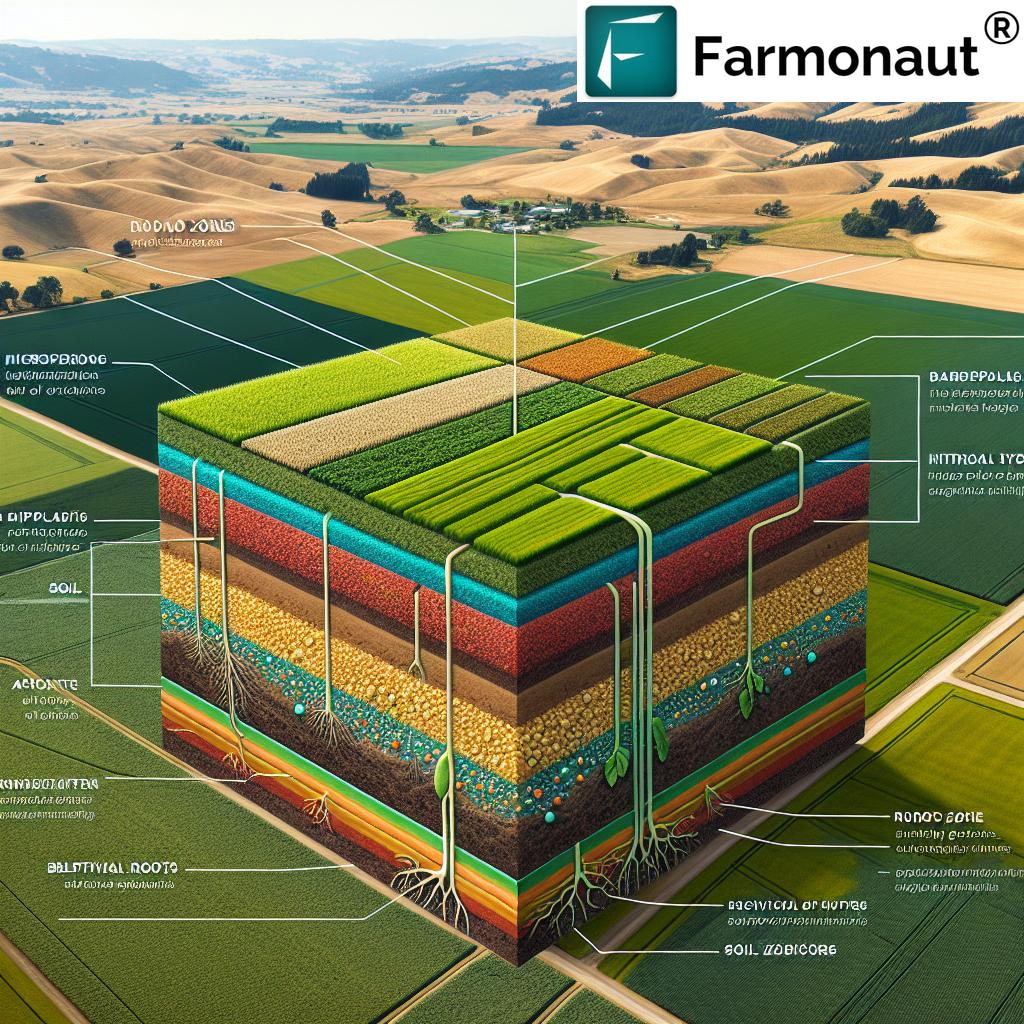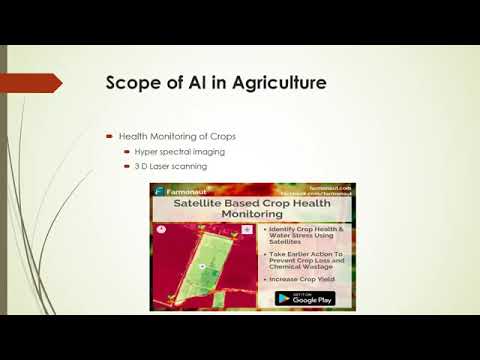Unveiling the Silent Threat: How Microplastics in Soil Impact Water Flow and Crop Health in American Agriculture
“Microplastics in soil can create ‘dead zones,’ hindering organic material decomposition in up to 20% of agricultural fields.”
In the ever-evolving landscape of American agriculture, we face a new and insidious challenge: the proliferation of microplastics in our soil. As we delve into this pressing issue, we at Farmonaut recognize the critical importance of understanding how these tiny plastic particles affect water flow, crop health, and the overall sustainability of our farming practices. Join us as we explore the silent threat of microplastics and their far-reaching implications for the future of agriculture in America.
The Pervasive Presence of Microplastics in American Soils
Microplastics, defined as plastic particles smaller than 5mm in size, have become ubiquitous in our environment. While much attention has been given to their presence in oceans and waterways, the infiltration of microplastics into our agricultural soils is a growing concern that demands our immediate attention. These minuscule particles originate from various sources, including the breakdown of larger plastic debris, synthetic fibers from clothing, and even some agricultural practices themselves.
Recent research has unveiled alarming findings regarding the concentration of microplastics in American farmlands. Studies conducted across various states have detected significant levels of these particles in soil samples, with some areas showing concentrations as high as several thousand particles per kilogram of soil. This pervasive presence raises critical questions about the long-term impacts on soil health, water management, and crop productivity.

The Science Behind Microplastics and Soil Water Flow
One of the most significant impacts of microplastics on agricultural soils is their effect on water flow and distribution. Our research indicates that high concentrations of these tiny plastic particles can fundamentally alter the soil’s relationship with water, leading to a range of issues that affect crop health and productivity.
- Water Repellency: Microplastics in soil have been observed to create hydrophobic (water-repelling) surfaces. This phenomenon can lead to uneven water distribution within agricultural fields, creating areas of excessive dryness or waterlogging.
- Altered Soil Structure: The presence of microplastics can disrupt the natural structure of soil, affecting its ability to retain and transport water effectively. This alteration can lead to increased runoff and reduced water infiltration rates.
- Impact on Soil Porosity: Microplastics can fill soil pores, reducing the space available for water and air movement. This reduction in porosity can significantly affect the soil’s capacity to hold and release water to plant roots.
These changes in soil hydrology have far-reaching consequences for crop development and overall field management. As we at Farmonaut continue to monitor and analyze soil health through our advanced satellite-based technologies, we’re increasingly focused on understanding and mitigating the impacts of microplastics on water flow in agricultural settings.
Crop Health and Microplastics: A Complex Relationship
The presence of microplastics in soil doesn’t just affect water movement; it also has direct and indirect impacts on crop health and development. Our research, combined with findings from leading agricultural scientists, has revealed several key areas of concern:
- Root Architecture: Microplastics can alter the physical structure of soil, potentially impeding root growth and development. This can lead to shallower root systems, making crops more vulnerable to drought and nutrient deficiencies.
- Nutrient Availability: The hydrophobic nature of microplastic-laden soils can affect the movement and availability of essential nutrients. This can result in nutrient deficiencies, even in well-fertilized fields.
- Microbial Activity: Soil microorganisms play a crucial role in nutrient cycling and organic matter decomposition. Microplastics have been shown to disrupt microbial communities, potentially creating “dead zones” where these vital processes are hindered.
- Plant Stress: Crops grown in soils with high microplastic concentrations may experience increased stress levels, making them more susceptible to pests, diseases, and environmental pressures.
“High concentrations of microplastics can repel water, affecting up to 30% of nutrient availability for crops in impacted areas.”
At Farmonaut, we’re leveraging our advanced crop health monitoring systems to track these impacts across various agricultural regions in America. Our satellite-based technology allows us to detect early signs of stress and nutritional deficiencies that may be linked to microplastic contamination, enabling farmers to take proactive measures.
Environmental Implications and Climate Change Considerations
The impact of microplastics on soil health and crop productivity is intertwined with broader environmental concerns, particularly in the context of climate change. As we face increasingly erratic weather patterns and extreme events, the presence of microplastics in soil adds another layer of complexity to agricultural resilience and sustainability.
- Water Conservation: In regions experiencing drought or water scarcity, the water-repelling properties of microplastic-contaminated soils can exacerbate water management challenges.
- Erosion Risk: Altered soil structure and reduced water infiltration rates can increase the risk of soil erosion, particularly during heavy rainfall events, which are becoming more frequent due to climate change.
- Carbon Sequestration: Healthy soils play a crucial role in carbon sequestration. The disruption of soil microbial communities by microplastics may impact this vital ecosystem service, potentially affecting efforts to mitigate climate change through agricultural practices.
Understanding these interconnected challenges is crucial for developing holistic approaches to sustainable agriculture. At Farmonaut, we’re committed to providing farmers with the tools and insights needed to navigate these complex environmental dynamics.
Sustainable Agriculture Practices in the Face of Microplastic Contamination
As we confront the challenge of microplastics in agricultural soils, it’s crucial to develop and implement sustainable farming practices that can mitigate their impacts. Here are some key strategies that we at Farmonaut recommend and support through our technology:
- Precision Agriculture: Utilizing advanced technologies like our satellite-based crop monitoring systems can help farmers identify areas of potential microplastic contamination and adjust their management practices accordingly.
- Soil Health Management: Implementing practices that promote soil organic matter content, such as cover cropping and reduced tillage, can help improve soil structure and water retention, potentially offsetting some of the negative impacts of microplastics.
- Water Management: Adopting efficient irrigation systems and practices that maximize water infiltration and minimize runoff is crucial in microplastic-affected soils.
- Bioremediation: Exploring the use of microorganisms or plants that can potentially break down or sequester microplastics in soil is an emerging area of research that holds promise for long-term solutions.
By integrating these practices with real-time data and insights provided by platforms like Farmonaut, farmers can make informed decisions that promote soil health and crop productivity in the face of microplastic contamination.

Research and Policy: Paving the Way for Solutions
Addressing the challenge of microplastics in agricultural soils requires a concerted effort from researchers, policymakers, and industry stakeholders. Current research efforts are focused on several key areas:
- Quantification and Detection: Developing more accurate methods for detecting and measuring microplastic concentrations in soil is crucial for understanding the scale of the problem and monitoring remediation efforts.
- Long-term Impact Studies: Conducting comprehensive, long-term studies on the effects of microplastics on soil ecosystems, crop yields, and food safety is essential for informing policy and management decisions.
- Innovative Remediation Techniques: Exploring novel approaches to removing or neutralizing microplastics in soil, including biotechnology and nanotechnology solutions.
On the policy front, there’s a growing recognition of the need for targeted regulations and initiatives to address microplastic pollution in agricultural settings. Some potential policy directions include:
- Stricter regulations on plastic waste management and disposal
- Incentives for farmers to adopt practices that reduce microplastic inputs and mitigate their impacts
- Funding for research and development of microplastic-resistant agricultural products and technologies
- Public awareness campaigns to educate consumers about the impacts of plastic pollution on agriculture and food systems
At Farmonaut, we’re committed to supporting these research and policy efforts by providing valuable data and insights through our satellite-based monitoring and AI-driven analytics platforms.
The Role of Technology in Monitoring and Managing Microplastic Impacts
As we face the challenge of microplastics in agricultural soils, advanced technologies play a crucial role in monitoring, understanding, and managing their impacts. At Farmonaut, we’re at the forefront of developing and implementing these technologies to support sustainable agriculture practices.
- Satellite-Based Monitoring: Our advanced satellite imagery technology allows for large-scale monitoring of crop health and soil conditions. By analyzing multispectral data, we can identify areas potentially affected by microplastic contamination, enabling targeted interventions.
- AI-Driven Analytics: Through our Jeevn AI Advisory System, we process vast amounts of data to provide personalized recommendations for soil and crop management in the context of microplastic challenges.
- Precision Agriculture Tools: Our platform integrates various data sources to support precision agriculture practices, helping farmers optimize resource use and mitigate the impacts of microplastics on water flow and nutrient availability.
By leveraging these technologies, farmers and agricultural stakeholders can make data-driven decisions to address the challenges posed by microplastics in soil.
Explore Farmonaut’s API for advanced agricultural data analysis
Comparative Impact of Microplastics on Soil Health
| Soil Health Indicator | Low Microplastic Concentration | High Microplastic Concentration |
|---|---|---|
| Water Infiltration Rate (mm/hour) | 25-30 | 10-15 |
| Soil Organic Matter (%) | 4-5 | 2-3 |
| Root Depth (cm) | 60-80 | 30-50 |
| Microbial Biomass (mg/kg soil) | 300-400 | 150-250 |
| Nutrient Availability (NPK levels) | High | Medium to Low |
| Crop Yield (% of normal) | 95-100% | 70-85% |
This table clearly illustrates the significant impact that high concentrations of microplastics can have on various aspects of soil health and crop productivity. It underscores the importance of addressing this issue to maintain sustainable agricultural practices.
The Way Forward: A Call to Action
As we confront the silent threat of microplastics in our agricultural soils, it’s clear that a multifaceted approach is necessary. At Farmonaut, we believe that addressing this challenge requires collaboration between farmers, researchers, policymakers, and technology providers. Here are some key actions we can take:
- Embrace Sustainable Practices: Farmers can adopt management techniques that promote soil health and resilience, potentially mitigating some of the impacts of microplastic contamination.
- Leverage Technology: Utilize advanced monitoring and management tools, like those offered by Farmonaut, to make data-driven decisions about soil and crop management.
- Support Research: Advocate for increased funding and support for research into the long-term impacts of microplastics on agricultural systems and potential remediation strategies.
- Promote Policy Change: Engage with policymakers to develop and implement regulations that address the sources of microplastic pollution in agricultural settings.
- Raise Awareness: Educate consumers and stakeholders about the issue of microplastics in soil and its potential impacts on food production and environmental health.
By taking these steps and remaining vigilant, we can work towards mitigating the impacts of microplastics on our agricultural soils and ensuring the long-term sustainability of American agriculture.
Access Farmonaut’s API Developer Docs for integration guidance
Conclusion: A Sustainable Future for American Agriculture
The challenge of microplastics in agricultural soils is a complex issue that touches on many aspects of farming, environmental science, and sustainability. As we’ve explored in this article, the impacts of these tiny plastic particles on water flow, soil health, and crop productivity are significant and far-reaching. However, with increased awareness, ongoing research, and the adoption of advanced technologies and sustainable practices, we have the tools to address this silent threat.
At Farmonaut, we’re committed to supporting farmers and agricultural stakeholders in navigating these challenges. Through our satellite-based monitoring, AI-driven analytics, and comprehensive farm management solutions, we aim to provide the insights and tools needed to maintain healthy, productive soils in the face of emerging environmental challenges.
As we move forward, it’s crucial that we continue to prioritize soil health, sustainable agriculture practices, and environmental stewardship. By working together and leveraging the best available science and technology, we can ensure a resilient and sustainable future for American agriculture.
FAQ Section
Q: What are microplastics and how do they end up in agricultural soils?
A: Microplastics are tiny plastic particles less than 5mm in size. They can enter agricultural soils through various pathways, including the breakdown of larger plastic debris, use of plastic mulches, contaminated irrigation water, and application of sewage sludge or compost containing microplastics.
Q: How do microplastics affect water flow in soil?
A: Microplastics can create hydrophobic (water-repelling) surfaces in soil, leading to uneven water distribution. They can also alter soil structure and reduce porosity, affecting the soil’s ability to retain and transport water effectively.
Q: What are the main impacts of microplastics on crop health?
A: Microplastics can impact crop health by altering root architecture, affecting nutrient availability, disrupting soil microbial communities, and potentially increasing plant stress levels.
Q: How can farmers mitigate the impacts of microplastics in their soil?
A: Farmers can adopt practices that promote soil health, such as adding organic matter, implementing precision agriculture techniques, and using efficient water management strategies. Utilizing advanced monitoring tools like those offered by Farmonaut can also help in identifying and addressing issues related to microplastic contamination.
Q: What role does technology play in addressing the microplastic challenge in agriculture?
A: Technology, such as satellite-based monitoring and AI-driven analytics, plays a crucial role in detecting early signs of soil and crop health issues related to microplastics. It also helps in implementing precision agriculture practices to mitigate these impacts effectively.




















